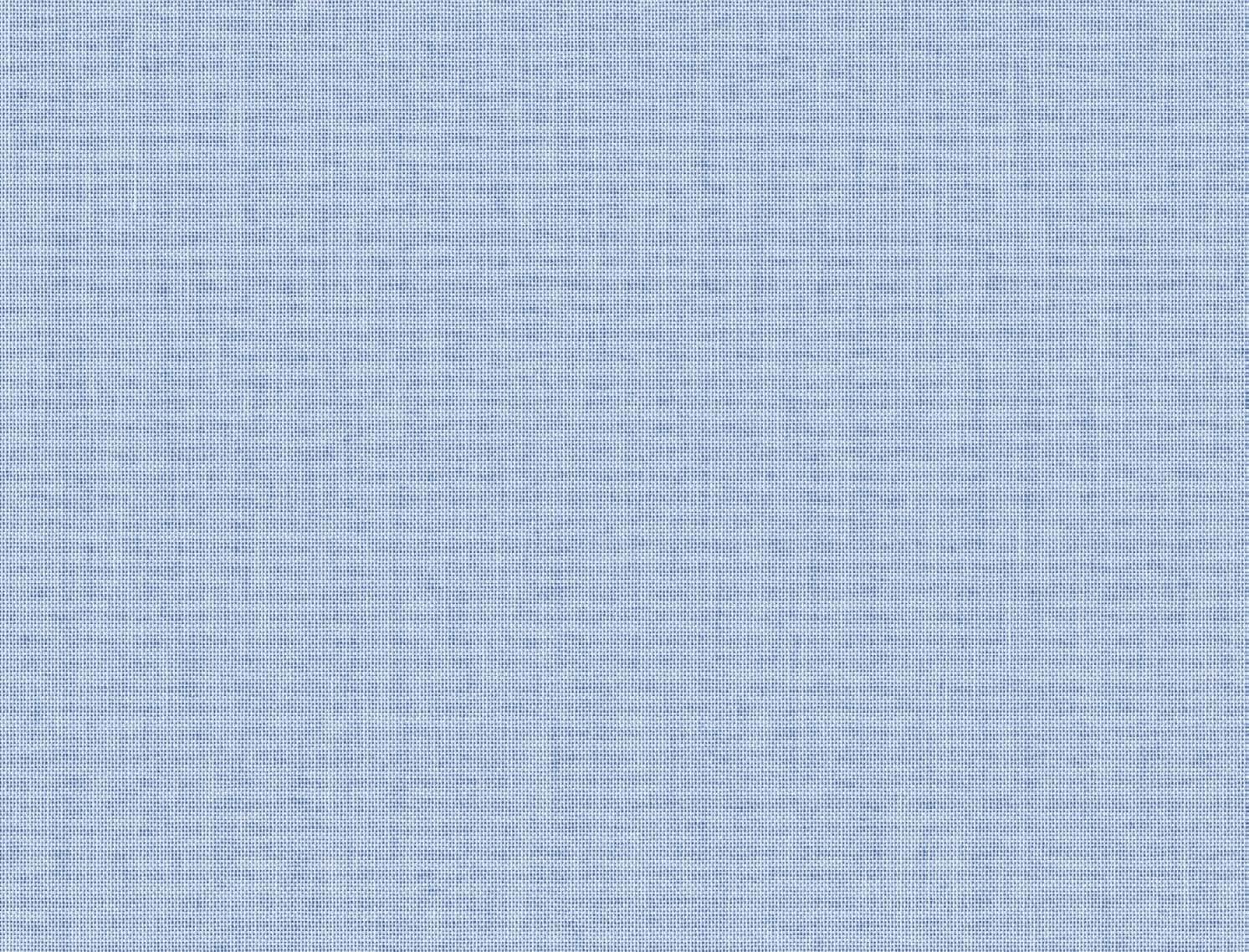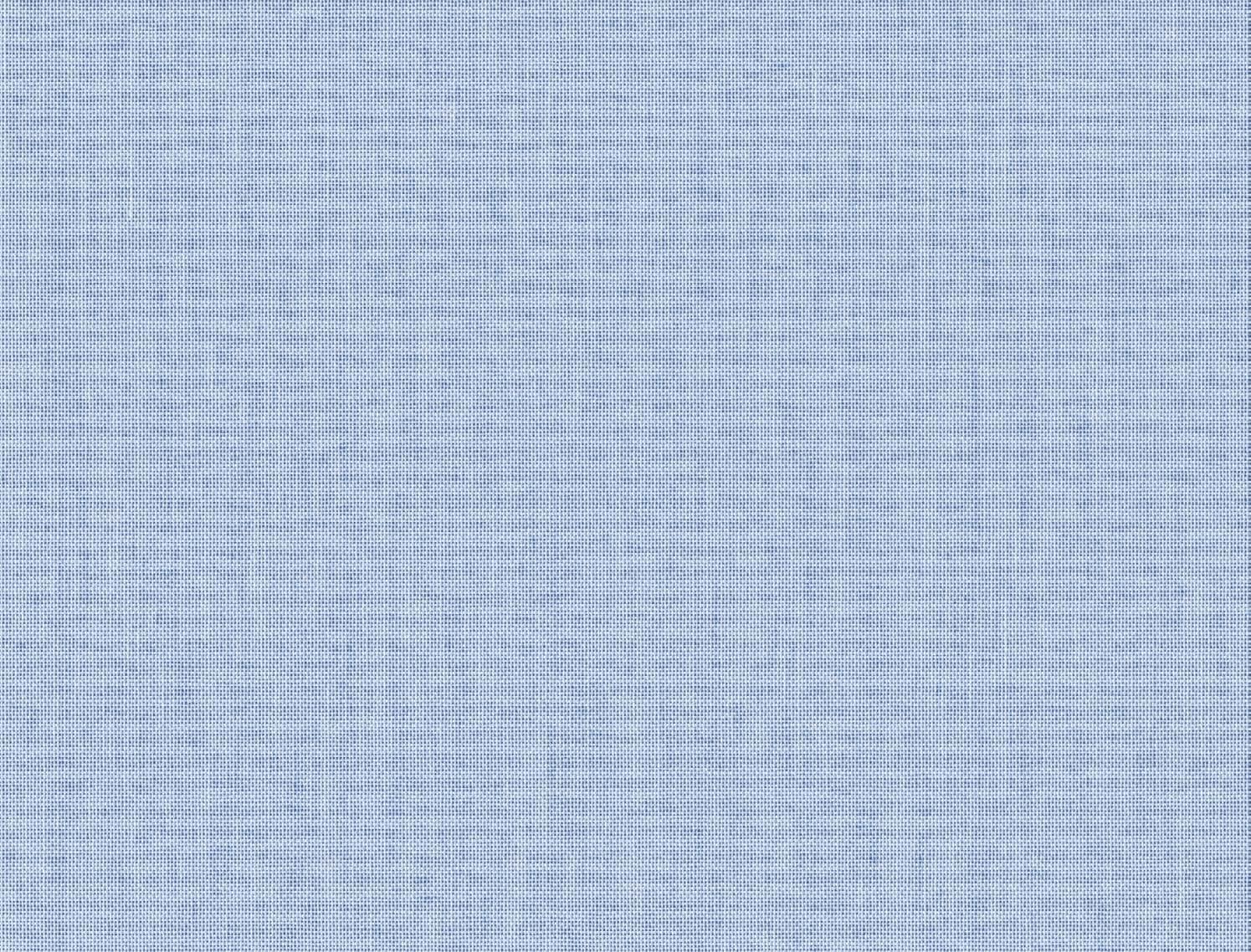CROSSCURRENTS
ARMENIA | LONDON

 Nouneh Sarkissian Eleanor Ekserdjian
Sam Chatto
Nouneh Sarkissian Eleanor Ekserdjian
Sam Chatto


20 Cork Street
London W1S 3HL
+44 (0)20 7734 1732
info@redfern-gallery.com redfern-gallery.com



 Nouneh Sarkissian Eleanor Ekserdjian
Sam Chatto
Nouneh Sarkissian Eleanor Ekserdjian
Sam Chatto


20 Cork Street
London W1S 3HL
+44 (0)20 7734 1732
info@redfern-gallery.com redfern-gallery.com

During a conversation a writer friend asked me: “What is the fire that burns in your blood?” I had been telling him of the years I tracked down the true story of Arshile Gorky, his Armenian childhood, courage and escape from massacre. But it was the figuration, colours and abstraction in his paintings that gave me the buried code to his Armenian background and sources. Armenian history had been almost air-brushed away but it lived on in his memory and surfaced in his art.
The name “Armenia” appears in the centre of the earliest maps of the earth as a large kingdom. It is found on the Babylonian clay tablet and maps of the ancient Greeks, and has lasted to the present day whilst all the other names have disappeared. The language is one of the oldest, with an alphabet from the 4th Century whose script doubled as a counting system. Although it is now a tiny country, in inverse proportion to its size it has exerted a vast influence on the rest of the world, producing mathematicians, scientists, translators, musicians, architects, traders, writers and film-makers.
This Christian nation at the crossroads of East and West was constantly attacked throughout centuries, its boundaries invaded, lands and inhabitants torn away. Most recently the ethnic Armenians of Artsakh (Nagorno Karabagh), which had been inhabited by Armenians since pre-Christian times, have been heavily bombed by Azerbaijan. The people were forced to leave their historic homeland in two days. Another classic repeat of the last century’s ethnic cleansing. Its unique monuments with the churches and cemeteries from the 4th century are still being destroyed in a deliberate programme to falsify history while other nations ignore the catastrophe.
Hitler’s trope before invading Poland - “Who, after all, speaks today of the annihilation of the Armenians?” still applies. Armenians bear the mark of the Genocide, a term invented specifically for them which disastrously has become commonplace. Despite the tragedies and horrors of the Armenian Genocide by Ottoman Turkey climaxing in 1915, over a hundred years ago, each family continues to mourn their losses and their dead. Survivors, like my grandparents, scattered abroad from the Middle East to North and South America, Russia and further afield to establish self-reliant diasporan communities contributing to their host countries. The diaspora is double the population of Armenia itself with a total of 10 million with 3.5 million in Russia. Is this sufficient to answer my friend’s question? Does the unassuaged sense of injustice stem from the past or is the current existential threat to Armenia understood as a renewed distress signal? How have artists engaged in their relationship with Armenia?
In the work of Eleanor Ekserdjian, Nouneh Sarkissian and Sam Chatto, history is not only evident in memory and loss but thrusts forward into the present tense. Ekserdjian intertwines her exquisite tensile drawings on film so redolent and conscious of the passage of time. Sarkissian imposes her powerful gestures on perilously fragile paper in a feat of daring. Chatto’s ceramics are poignant objects twisted and convulsed, survivors from a distant cataclysm.
The cultivation and active practice of the arts grows even more urgent and vital. Our struggle to preserve the freedom of the human spirit, the instinctive gesture, the integrity of thought and imagination, our need for beauty directed by one person to another is omnipresent in this alerted space of fine arts.
Nouritza Matossian is author of Black Angel, A Life of Arshile Gorky, the inspiration for Atom Egoyan’s feature film Ararat, and the biography and critical study, Xenakis
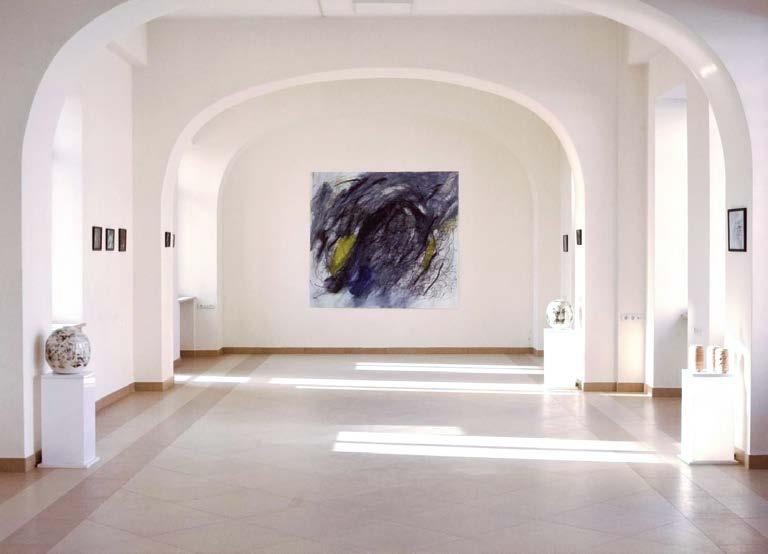 Imagined Landscapes Exhibition, Yerevan My Love Foundation, Yerevan, Armenia, 2022
Imagined Landscapes Exhibition, Yerevan My Love Foundation, Yerevan, Armenia, 2022
Nouneh Sarkissian’s 2020 ink on paper work It’s not the End of the World is dominated by a sweep of black ink which appears to plummet from the top left hand corner of the paper, landing in the foreground. Its descent begins from outside the picture plane, giving the image the air of a snapshot, a moment caught precariously, the streaks of ink representing not an object, but its trail. It is the motion blur artefact of something moving towards us too quickly to be captured cleanly. The object itself lands in a field of black ink at the bottom of the paper where its exact dimensions and geometry are obscured by the blackon-black composition. Instead, all we have to go on in terms of identifying this object is its ghostly silhouette, produced by the different angle of brushstroke making up the black object and its equally black backdrop. Jutting out from the black ground is a rough rectangular object, which appears to sit behind the translucent smear of black ink descending to earth. It is a dynamic, perhaps even destructive, image.
Armenia’s history is littered with such destruction, and this legacy unavoidably inflects both Armenian identity, and its place in public consciousness more broadly. While Sarkissian spent a considerable portion of her life in Armenia, before being based primarily in London, the two artists she exhibits alongside here first visited the country only two years ago as part of an artist’s residency programme in the capital, Yerevan. Eleanor Ekserdjian is herself of Armenian heritage, whilst Sam Chatto had no prior links to the country. Accordingly, each of the three artists has a different relationship to Armenian identity, inevitably conditioned by their own biography and subjectivity. Here I wish to examine how each of these artists navigates this relationship, focussing on two themes at the heart of each of these artists’ practices: gesture and landscape.
We must not ignore the optimism of the title of Sarkissian’s drawing. Her work is rich in quotation and reference to the legacies of early twentieth-century abstraction, much of which was profoundly motivated by an anti-war sentiment that united most of modernism’s avant-gardes. It is easy to forget that many of the key figures of modernist art were migrants forced to flee, return home, or seek the safety of neutral territory when battle lines were drawn in 1914. It was on his forced return to Moscow in 1914 that Wassily Kandinsky moved firmly away from figuration, and indeed his earliest dalliances with a pure abstraction used ink on paper. While these works are often framed by discussions of spiritualism, synaesthesia and musicality, the political backdrop which necessitated his move to Moscow is a clear context for this shift in Kandinsky’ s work, and an underlying motive for the artist’s turn to spiritualism as a form of retreat or even therapy.
In considering Sarkissian’s work as similarly therapeutic, it is worth reflecting that movement in art is often produced through a reversal of the trajectory of the thing being depicted. That is, the object descending from the sky in It’s not the End of the World is produced by the artist’s hand starting from the object itself and back upwards against the chronology of its descent, returning the object into the sky, and reversing the timeline of destruction apparent upon initial viewing. This may seem a slightly trite reading; however, the exaggerated presence of gesture in Sarkissian’s work implores its viewers to consider the
Harry Weeks
artistic process. Every mark on the paper evidences its own making and invites us to reenact the gesture of the artist as we take in the image.
Sarkissian’ s Windows series (2016) is equally gestural, but there is a stillness and a tranquillity to these images in stark contrast to the earlier ink works. In Windows II, thick yellow oil paint lands in place on the image, implying a brush merely kissing the canvas, rather than ink being dragged across paper. There is no movement implied, either through brushstroke, or through the content suggested by the title of the series, which conjures images of seated contemplation through a series of windows. The subject of this series is not the landscapes beyond the windows though, but the windows themselves. The square frames of the windows hold within them mere sensations of light and colour. Even the lines of green, red and orange across the centre of Windows I suggest the refraction of light through a windowpane, emphasised by the thin, glassy white paint behind, rather than anything purely figurative.
As with the modernists to whom she pays such deference, Sarkissian has herself been impacted by war and political struggle. As an Armenian who has lived in London since 1991, she shares a diasporic condition with the vast majority of Armenians globally, most of whom live outside of the country’ s borders. She studied Art History in London during the 1990s, writing a dissertation on Arshile Gorky, another member of the Armenian diaspora who lived a large bulk of his life outside of Armenia, and his influence is writ large on much of Sarkissian’s work. A Tate retrospective in 2010 was framed around the thesis that Gorky’s work was defined by a sense of nostalgia, both for his youth in his homeland, and for the past of a country which was torn apart during his childhood. There is a similar wistfulness at play in the Windows series, amplified by its refusal to provide us with subject matter through the windows. Are these windows in Armenia being remembered? Are they windows in London? Even if that latter is the case, the absence of subject matter implies a kind of daydream rather than concerted looking.
Like Sarkissian, Sam Chatto comes from an art-historical background, having studied the subject at Edinburgh College of Art. However, his practice does not immediately reveal this background. It does not legibly play with arthistorical precursors in the way that Sarkissian’s does. It is not easily placed into this or that lineage. Instead, Chatto’s practice seems immensely personal, a methodical study of the materiality of ceramics and its relationship to the artist that reflects his rather autodidactic journey into art-making. Outside of his studies at University, Chatto began independently pursuing a ceramics practice, which was honed after graduation through a series of apprenticeships and residencies, both in the UK and internationally. Of particular significance to his practice was an apprenticeship he undertook in Japan in 2023, under the Kyoto-based ceramicist Yagi Akira. The forensic and fastidious attention to process and material, for which Japanese ceramics are known, echoes Chatto’ s own working process, defined as it is by meticulous and obsessive seriality and iterative change. Chatto has indeed adopted porcelain as a primary material for his work, something which can be directly attributed to his time in Japan. It is a material that demands the kind of blinkered attentiveness that defines both Chatto’s work and the field of Japanese ceramics.
However, Chatto’s work demonstrates a kind of creative rebellion against some of the core tenets of this great influence on his work. Japanese ceramics are defined by a level of craftsmanship and mastery over the material
that produces a uniformity and crispness that is almost mechanical in its reproducibility and consistency. Chatto on the other hand revels in the tension between human and material that lies at the heart of ceramics as a practice. This is most apparent in his Torqued Form series, produced in the wake of his time in Japan. Its use of porcelain recalls Chatto’s influences, but here the porcelain has unfurled itself from the confines of its use in the production of uniform bowls and cups. The porcelain twists upwards from a fairly solid and stable base into increasingly chaotic and pitted geological strata, culminating in a lacy, flaky finish at the rim that feels on the verge of collapse. The forms as a whole seem only held in place by their relatively weighty bases.
Rather than hiding this tension between human and material, Chatto exaggerates it at all turns. The title gives an indication of his process. While the potter’s wheel is designed to produce a consistent, smooth and controlled circular movement impossible through purely manual means, Chatto here reinstates the inconsistency and unpredictability of human movement by torquing the porcelain by hand. Gone is mechanised regularity, replaced by the imperfections of human musculature and anatomy. Freed from its imposed conformity, the porcelain is able to exploit the unsteady hand, responding differently to the varying levels of torque applied at each moment of the manhandling of the material. At points the porcelain seems to comply, producing smooth, flowing twists recalling drapery. At other moments in the process a momentary pause in the torquing or an excess of muscular force allow the porcelain to burst forth into craggy protrusions. As the torquing process goes on, further and further from the anchor provided by the surface of the wheel, the inconsistencies grow. While the smaller pieces retain a degree of uniformity, the larger ones descend into an induced entropy. On the one hand, this is an example of the artist allowing the material to express itself and become an active agent in the artistic process. On the other, this has been facilitated by an extreme and energetic intervention, the material being manhandled into submission and physically coerced into expressing itself.
The process of firing, usually the moment in which human mastery over the material is assured, is here the point at which the material is able to follow its own path. Firing is typically an extremely controlled process, where the moisture content of the ceramic and the temperature gradient of the kiln, amongst other factors, are tightly monitored in order to ensure the desired outcome. Chatto’s wood firing technique is more primal than modern techniques however, and is instead subject to the whims of yet another material – the wood being burned. This, in combination with the inconsistencies of thickness and moisture of the sculptures being fired, gives the porcelain another chance to react in unpredictable ways. Indeed porcelain, compared to other ceramics, is particularly susceptible to inconsistency, the material entirely changing character as a result of minor alterations in moisture content. All the pieces display evidence of cracking, but each of the cracks is different in character, evidence of the different material qualities each piece has been allowed to independently develop.
The geological look of Chatto’s sculptures ties the porcelain back to its origins as a natural material. This link between a material and its origin has become a prominent interest of Chatto’s, particularly since his 2022 residency in Armenia. Here, Chatto prioritised using local clay to produce stoneware rooted in the Armenian landscape. However, landscape is rarely free from human intervention, and Chatto’s learnings in Armenia echo this. Just as significant as
the naturally occurring minerals and clays of Armenia were the cross stones, known as Khachkars, that Chatto encountered during his residency. Often centuries old, these sculptures bear the markings of weathering, erosion and the growth of mosses and lichens on their surfaces. The comparison with Chatto’s own interest in the entropic relationship between the man-made and the natural is clear. Khachkars often appear in groups, mostly in graveyards, and their clustering draws attention to their variations in size, shape and weathering. Chatto’s own presentation of his sculptures in groups prompts something similar. It is in their exhibition alongside one another, and the possibilities for comparison that this engenders, that the viewer becomes truly conscious of the artist’s process, and his toying with the endless variations that emerge from the tension between human and material.
Eleanor Ekserdjian’s work likewise reveals the influence of her residency in Armenia in 2022, and in particular the significance of landscape. For Ekserdjian, however, the landscapes encountered on residency had another significance, deriving from her biography as an artist who had never previously visited Armenia, but is of Armenian heritage. For her, then, the Armenian landscape raised questions of diaspora, memory, displacement and migration. In a work like Geghard (2022), landscape is inscribed into the canvas in multiple ways. Firstly, Ekserdjian filmed the Geghard monastery in Armenia, which she then projected onto a canvas. Over this she produced an automatic drawing, similar in technique, if not in style, to the method developed by André Masson in the early twentieth century. As the film projects, Ekserdjian records an immediate and impulsive drawn response to the film superimposed over the projection. Adding yet another layer, Ekserdjian then paints a second, perhaps more considered response to the landscape on top of the drawing. The final work, then, is the accumulation of three different methods of directly or indirectly recording a landscape. While the drawing and the painting remain, the projected film exists merely as a ghost in the final work, memorialised through its influence on the ink-marks left on the canvas, and then at another degree of remove through the influence of the ink-marks on the brushstrokes.
At each stage in this process, the work moves further away from an objective recording of landscape, and becomes an increasingly deeply subjective response to it. Even in making the initial film itself, the artist is taking decisions regarding framing and composition of each shot, unconsciously or otherwise etching her own self and her relationship to the landscape into her recording. The drawing process then etches Ekserdjian into the work in two ways. Firstly, the spontaneous and unthinking drawing technique demanded by the fact that she is trying to keep up with the film in real-time produces a raw, unfiltered response to the landscape. Compare the marks in Geghard with those in Sevan (2022), another work produced through a similar process, documenting the lakeside monastery of Sevan. While the former work’s drawing is claustrophobic and condensed into the centre of the canvas – a reflection on Geghard having been carved from the rock in a hillside landscape dominated by craggy cliffs – the latter’s is open and dispersed across the entirety of the picture. It is dominated by wavy lateral marks echoing the exaggerated horizontality of seascapes, produced by the meeting of sea and sky.
Secondly, Ekserdjian’s own body is inscribed into the canvas, with the size, angle and curvature of certain lines reflecting the geometry of her own anatomy. In the upper left corner of Sevan there are repeated long arcs, moving from the centre-left of the canvas and curving in a clockwise motion
towards the upper-middle. One need not watch the filmed documentation of her drawing practice to visualise these marks as the result of a sweep of her whole arm, articulated from the shoulder as she reaches up towards the higher areas of the canvas. Closer towards the centre, there are similar shapes, but smaller in scale and suggesting a smaller radius in the artist’s movement. Here it seems the elbow is the hinge. Right in the heart of the image we see flicks of the wrist. Each of these is a bodily trace which embeds the artist’ s own physicality into these depictions of landscape, much in the same way that Chatto’s works retain the marks of their manual torquing by the artist.
The technique of drawing over film as it is projected was already a staple of Ekserdjian’s practice prior to her residency in Armenia, as evidenced in her 2021 work Fear Eats the Soul. Here Ekserdjian responds to Rainer Werner Fassbinder’s masterful study of migration and displacement in post-war Germany, Angst essen Seele auf (Fear Eats the Soul, 1974). The film resonated with Ekserdjian not simply for its subject matter, compelling for an artist exploring her own diasporic relationship to Armenia, but for the fact that Fassbinder’s film is itself a response to an earlier film, Douglas Sirk’s 1955 melodrama All That Heaven Allows. The act of translation, and of subjective response and reinterpretation shares a great deal with Ekserdjian’ s own process.
The Armenian works add painting as a final layer of translation and interpretation on top of the drawings. While the drawings are quick and instinctive, the process of painting allows for a more considered and thoughtful response to the landscape. The contrast in these two paces of working is visible in a work like Marmashen (2024), where the dense, frenetic drawing, dominated by rapid flicks of the wrist, sits in tension with rather soothing burnt orange, sky blue and yellow tones. Like Sevan this work was produced upon return to London, and perhaps reflects more upon the memory of a place than Geghard (produced while in Armenia). As tends to be the case with memory, over time its heat and emotion dissipates, giving way to more tempered and processed sensations. Here the experience of having visited in a dusky late afternoon, with Marmashen monastery engulfed in a soft red light (as captured in the study for the work), seems to be the sensation that has lingered longest.
Ekserdjian and Chatto’s exhibition in Yerevan, the culmination of their residency, was titled ‘Imagined Landscapes’, and this framing seems apt for all three artists discussed here. Each artist here engages in a process of reconstructing landscape from its traces. Sarkissian’ s Windows evoke a wistful, partially remembered, perhaps romanticised past; Chatto’s ceramics allow the organic materials at the heart of the medium to once again exert their natural tendencies; and Ekserdjian’s overlaid drawings and paintings composite together different forms of remembering and experiencing landscape. The process of imagining, though, necessitates the insertion of the imaginer into the imagined. In these works, this largely takes place through gesture and the clear insinuation of the presence of the artist in the works themselves. In both Sarkissian and Ekserdjian’s work we can trace the path of the arm of the artist in the process of mark-making, while in Chatto’s torquing motion, his whole body is implicated in the contorted spirals of his ceramics. Imagination is an active and subjective process, and each of these three artists, with their diverse biographies and relationships to the Armenian landscape at stake here, place themselves into the landscapes being imagined.







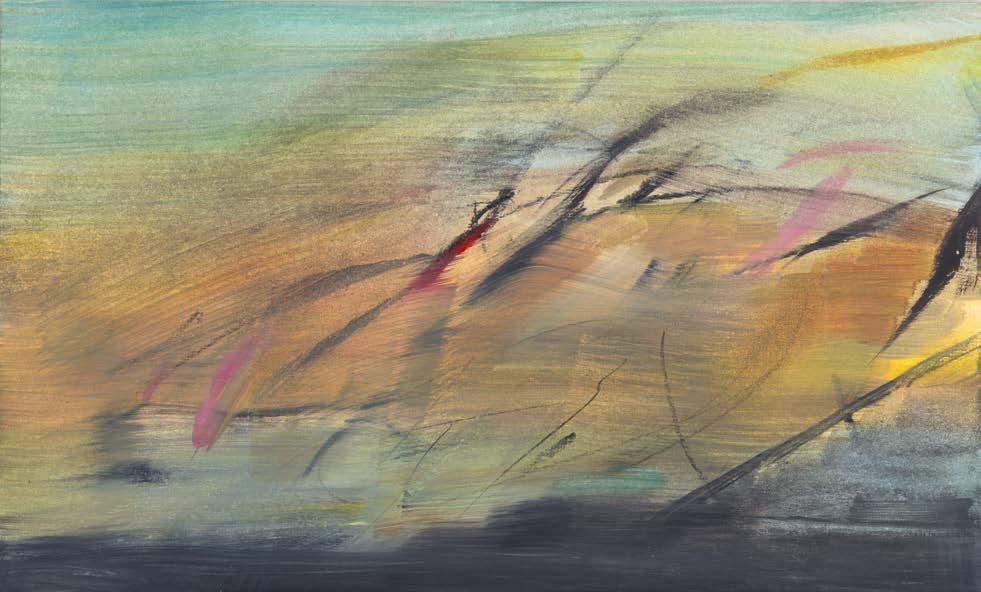






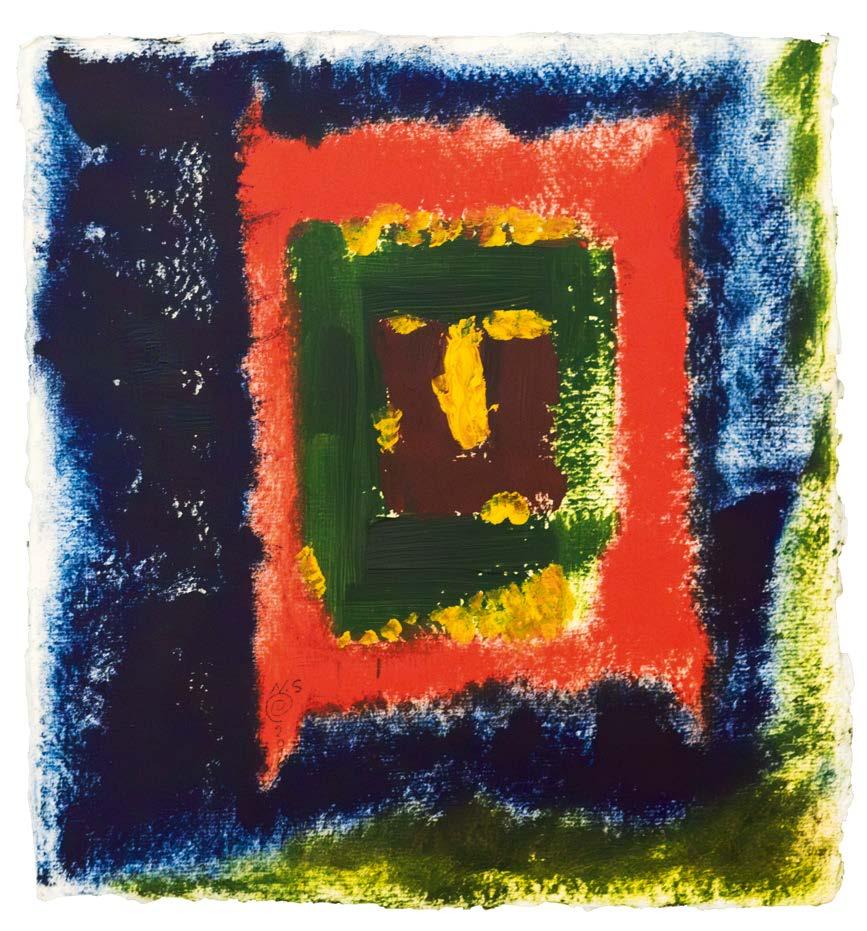






Never Think that War is not a Crime, 2020

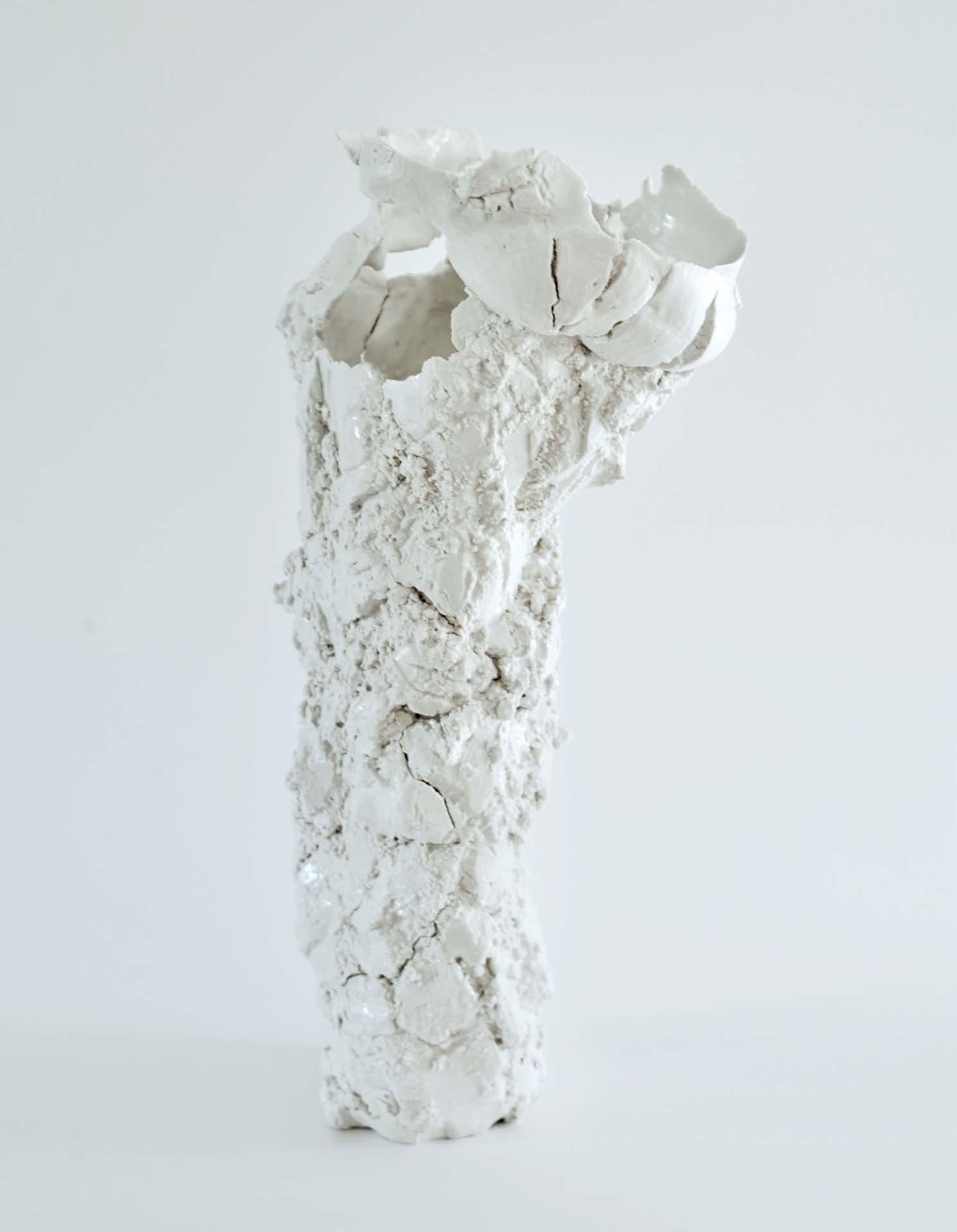
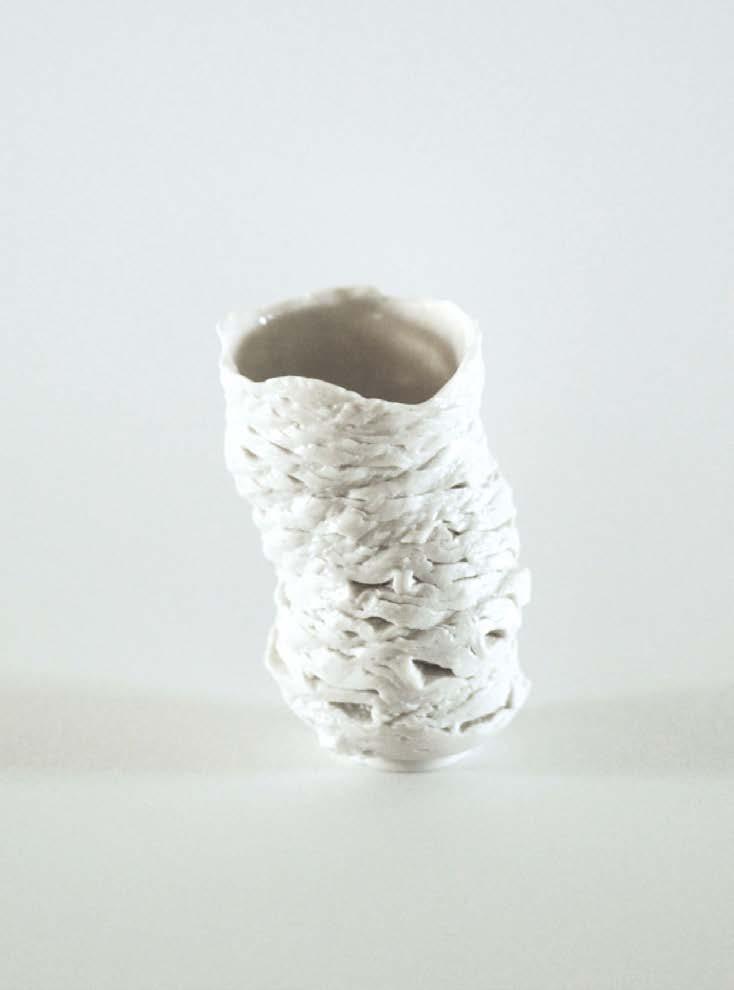





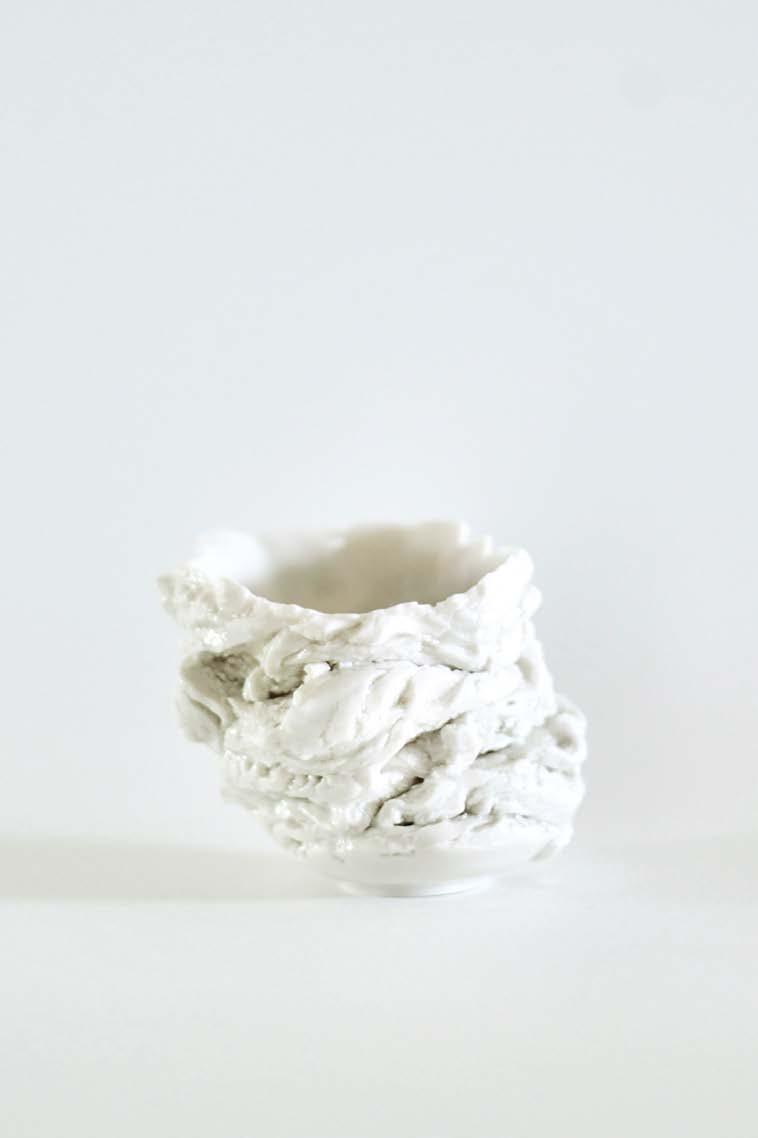



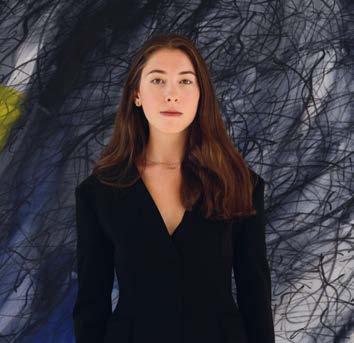

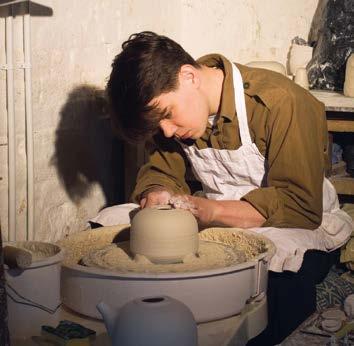
Eleanor Ekserdjian (b. 1996) is an abstract painter and film artist. Ekserdjian’s practice involves projecting the moving image onto paper or canvas and drawing from and over it, her physical and emotional responses being made visible through rapid mark-making. These paintings and drawings become lyrical landscapes which explore her evolving emotional response to the film. Her most recent film and painting series was made during a six-week artist residency in Armenia, and explores cultural memory through landscape. Pepe Karmel, author of Abstract Art: A Global History, defined her work as ‘Poetic, elegant and mysterious — a kinetic, subjective transcription of the world into calligraphy.’ Ekserdjian’s work is held in several private collections and her recent projects include ‘International Diaspora Exhibition’, Armenian Centre for Contemporary Experimental Art, Yerevan, Armenia (2023); ‘Light Pictures’, Seen Fifteen Gallery, London, UK (2023); Hauser & Wirth Residency, Braemar, UK (2022); ‘Imagined Landscapes’, Yerevan My Love Foundation, Yerevan, Armenia (2022); ‘Light and Line’, Gallery 286, London, UK (2021).
Nouneh Sarkissian (b. 1954) was born in Yerevan, Armenia. She has lived in London since 1991, but her deeply felt connection to her homeland, its distinctive landscape and its tumultuous past and present, underpins her entire practice. Sarkissian’s abstraction inhabits the borders of the conceptual, representational and psychological; her compositions are formed by gestural applications of black ink and accents of pure colour. Executed on fibrous, handmade paper, lustrous India ink is applied to each sheet with reeds of varying widths, sometimes detailed with a range of sanguine and red pens. Jason Carey, Head of Impressionist and Modern Art, Christie’s London, has described her work as having a ‘distinct visual musicality; a story told by means of process and the act of free expression’. Sarkissian has a MA in History of Art from Goldsmiths College, University of London, writing her dissertation on Arshile Gorky. Her first exhibition was held at the Everard Read Gallery, London, UK (2017).
Sam Chatto (b. 1996) is a ceramic artist who explores the idea of transformation through process in both ceramics and printmaking, developing a highly individualistic practice where both the subjects of his work and the materials he uses display his deep connection to the landscape around him. His practice began in 2018, and he quickly developed a passion for wood firing, digging clay and making glazes. He undertook an apprenticeship with porcelain master Yagi Akira in Kyoto, Japan in 2023, working with porcelain to learn the strict traditional technique of throwing. Since his return, he has been working on a series of abstract sculptures inspired by the qualities and limits of porcelain, fascinated by the way in which material breaks into natural patterns, evoking landscape, whilst remaining a living material. Chatto’s work is held in several private collections and his recent projects include ‘Objects of Contemplation’, Make Hauser & Wirth, Somerset, UK (2024); ‘‘Ceramic Collection’, Fels Gallery, London, UK (2023); ‘Summer Presentation’, The Royal Drawing School, London, UK (2023); ‘Imagined Landscapes’, Yerevan My Love Foundation, Yerevan, Armenia (2022); and ‘Ceramic Selection London’, Laurence Coste, London, UK (2021).
Special thanks to Armen Sarkissian, Yerevan My Love Foundation, Harry Weeks, Nouritza Matossian and Thomas de Waal
Catalogue © The Redfern Gallery, 2024
Works: © Nouneh Sarkissian / Eleanor Ekserdjian / Sam Chatto
Foreword: © Nouritza Matossian
Essay: © Harry Weeks, Newcastle University
Edited by: Eleanor Ekserdjian
Photography: Alex Fox, Vahagn Gulakyan, Nathalie Tufenkjian, Vaghinak Ghazaryan, Arthur Vickery
Design: Graham Rees Design
Print: Gomer Press
Published to coincide with the exhibition
Nouneh Sarkissian
Eleanor Ekserdjian
Sam Chatto
12 June to 12 July 2024
Published by The Redfern Gallery, London 2024
ISBN: 978-0-948460-97-5
All rights reserved. No part of this book may be reproduced or transmitted in any form or by any means, electronic or mechanical, including photocopying recording or any other information storage or retrieval system without prior permission in writing from the gallery.
20 Cork Street London W1S 3HL
+44 (0)20 7734 1732
info@redfern-gallery.com redfern-gallery.com

